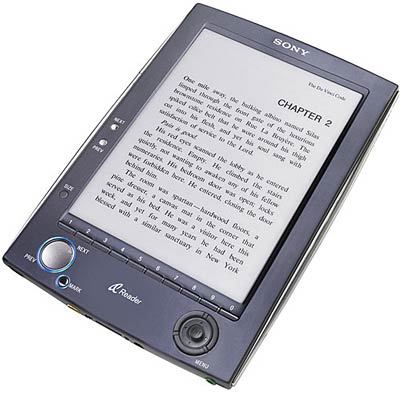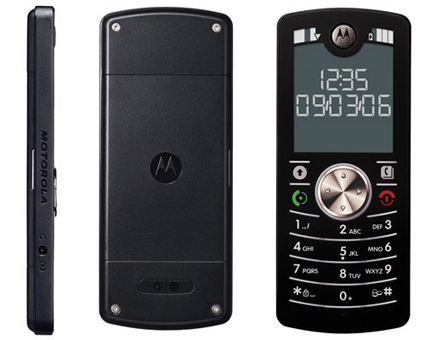
As computers proliferated, various speculations of how it would eventually be a mainstay in our lives were rife, and the notion that computer displays would eventually replace the traditional published materials like books, newspapers and magazines etc. were especially popular. Like the Sony Reader (first picture) above, flat, book-like gadgets of all shapes and sizes were prophesied or produced.

E-ink was a particular fore-runner in this sector. Their technology is illustrated above – millions of capsules houses even more subcapsules that are either white or black in color. When an electrical charge is applied, the black/white subcapsules would drift up or downwards accordingly to form the desired display. There are some advantages in this technology over conventional displays (like LCD) – they are much cheaper to produce, can be made very thin, requires very little power because it doesn’t need to have a backlight, can be read over a wide angle, and are high in contrast and crispness.
It does seem that the E-ink display may be getting closer to their founder’s goal of an electronic display to replace paper. However, that can be a very limiting thought – not because I am against e-papers, but rather, by constraining the perspectives to simply replacing paper, we might have missed many other opportunities where this technology can be applied – and with much beauty indeed!

Above are Seiko watches that uses the E-Ink technology in their watch displays. The one on the right won it the 2006 Grand Prix d’Horlogerie de Genève prize for electronic watches for the breakthrough application in watch displays. And in 2007, they are even more delightfully used – taking E-Ink’s display versatility to have a much more sensual and evocative display, away from the conventional look of the segmented LCD that have been pervasive in digital watches (for the productivity-mule among you, the watch also has a efficiency mode where information is indeed displayed more clearly and directly). I’m definitely impressed with their sensual and elegant application of the E-Ink technology, which has erased my impression of E-Ink being confined to cheap-looking, squarish and boring.

The MOTOFONE is another great example in E-Ink application. The MOTOFONE was developed to target at the developing regions like India and China. A few factors would become very important: they have to be (dirt) cheap to produce, be able to last long in between charges (electricity supply may be erratic; the user may be out-of-home for extended periods of travel without access to any power points; designing for it to be used in the outdoors and rural areas would require good contrasts while in the sunlight, as well as dust-proofing):
The most radical thing about the Motofone is the screen. It’s the first cellphone to make use of technology from E Ink, a maker of electronic ink. E Ink is literally like ink embedded in the screen, and each molecule switches between dark and light depending on how it is zapped with electrical charges.
Once the ink is electrified into a pattern — say, the time — it stays that way without using any more power, behaving like ink on paper.
The result serves two important purposes for the Indian market. First, the screen uses exceedingly less power than a typical illuminated cellphone screen. The Motofone has about 400 hours of standby battery time. Second, the screen is clearly visible in direct sunlight, again like ink on paper. This is a nifty feature when marketing to farmers and fishermen.
With E-Ink as the display, it can afford to have a MUCH lower consumption in battery power (the screen has always been the chief gobbler of cellphone battery juice). It does not need a backlight, and there is zero power consumption to maintain the display (power is only required to switch between the black/white states). This would mean that they can afford to give it a slimmer and lower-capacity batteries without affecting performance at all (does YOUR cellphone have a 12 days standby time?), which would definitely have a tremendous impact to the price point. It costs around $40 to produce, and I have seen it being retailed for around USD55 without any contracts with service providers.
So, think beyond the paper!

